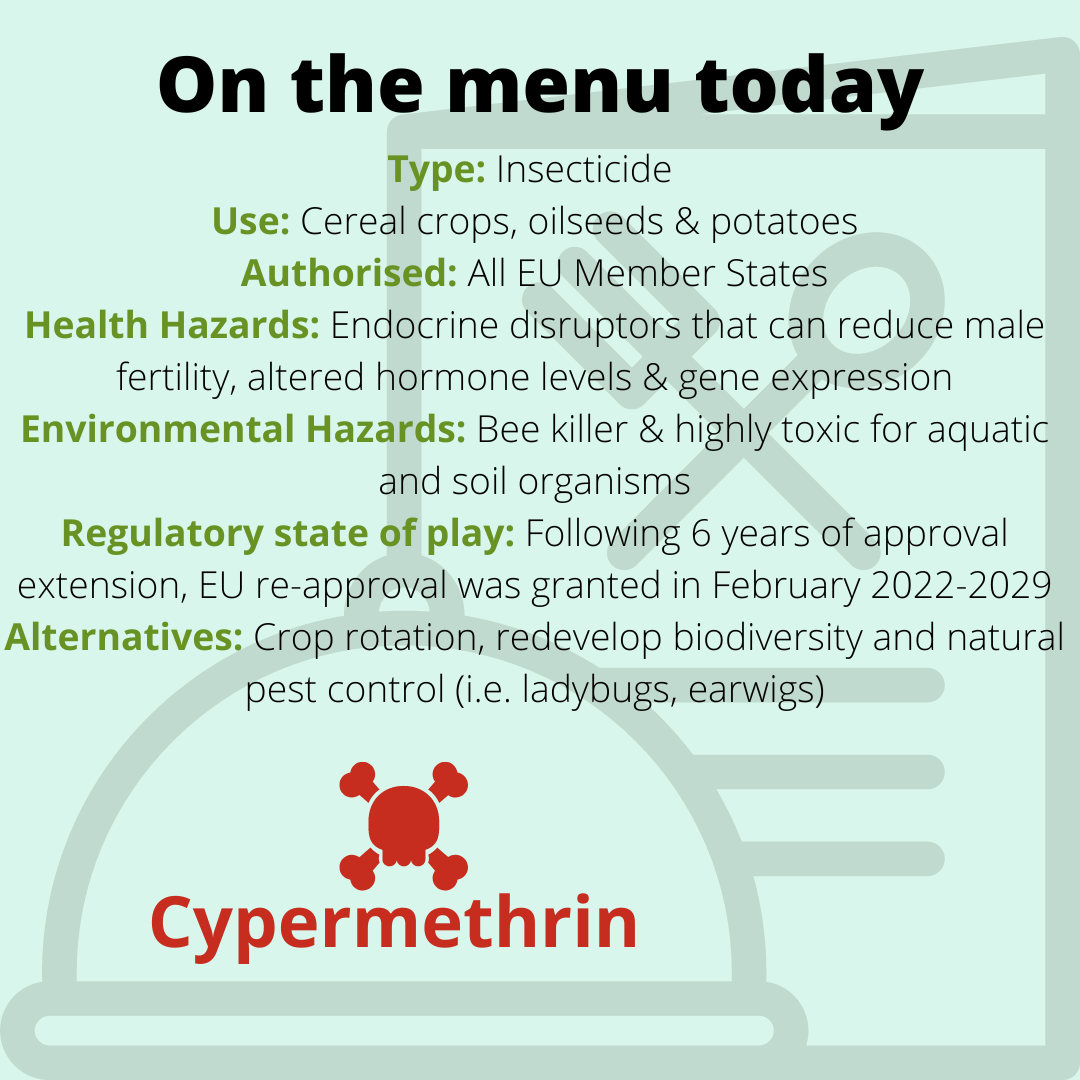Type: Insecticide (pyrethroids).
Health Hazards: A range of hormone-related adverse effects (e.g., reduced male fertility, altered hormone levels and gene expression). The European Joint Research Centre (JRC) considered cypermethrin a full endocrine disruptor in 2016. Developmental Neurotoxicity Study also showed effects, but more studies are needed to understand the impacts (e.g., possible relation to Parkinson’s disease). In addition, the review of Marettova 2017 points at the wider group of pyrethroids with neurodevelopmental, reproductive, and immunological effects that may result following exposure to some pyrethroids at levels below those that induce overt signs of neurotoxicity. Pyrethroids are endocrine disruptors that reduce steroid hormone levels and cause reproductive damage. Cypermethrin is among the pyrethroids causing the most severe damage.
Environmental Hazards: Cypermethrin is a bee-killer, and highly toxic for aquatic and soil organisms. With continued use, a reduction to safe levels is not possible according to EFSA due to insufficient mitigation measures (spray drift reduction).
Exposure: Authorised in 27 member states (AT, BE, BG, CY, CZ, DE, DK, EE, EL, ES, FI, FR, HR, HU, IE, IT, LT, LU, LV, MT, NL, PL, PT, RO, SE, SI, SK).
Residues: Found in peaches, lettuce, spinach, and tomatoes.
Regulatory State of Play: Following 6 years of approval extension, EU re-approval was granted in February 2022 for 7 years - until 2029.
Use: Applied as a spray on the fields, such as cereal crops, oilseeds and potatoes. It is also used against a broad spectrum of pests, especially Lepidoptera.
Alternatives: Crop rotation to prevent accumulation of the insects in the soil. Avoiding fields previously used as meadows. Extensive soil cultivation to expose the insects to the sun. Monitoring of the soil (feromone traps). If intervention is needed: thuriengiensis or spinosad are the options.

Court Case against Cypermethrin approval
We challenged the re-approval of cypermethrin in 2022. The EU Commission did not follow the conclusions of its scientific agency (EFSA) to ban this insecticide. Endocrine disruption, genotoxicity and extreme toxicity to aquatic life and bees were among the numerous issues highlighted by the EFSA. The EU General Court sided with the Commission and we appealed in 2024. In June 2025 the Advocate General in the EU Court of Justice concluded that the EU Commission did not properly assess the risks. It is now up to the court to come to a final decision.
Advocate General slams Commission’s handling of Cypermethrin case (July 2025)
EU Court Advocate General considers EU re-approval of pesticide cypermethrin unlawful (June 2025)
PAN Europe takes legal action against cypermethrin, a highly hazardous pesticide recently re-approved by the European Commission (September 2022)